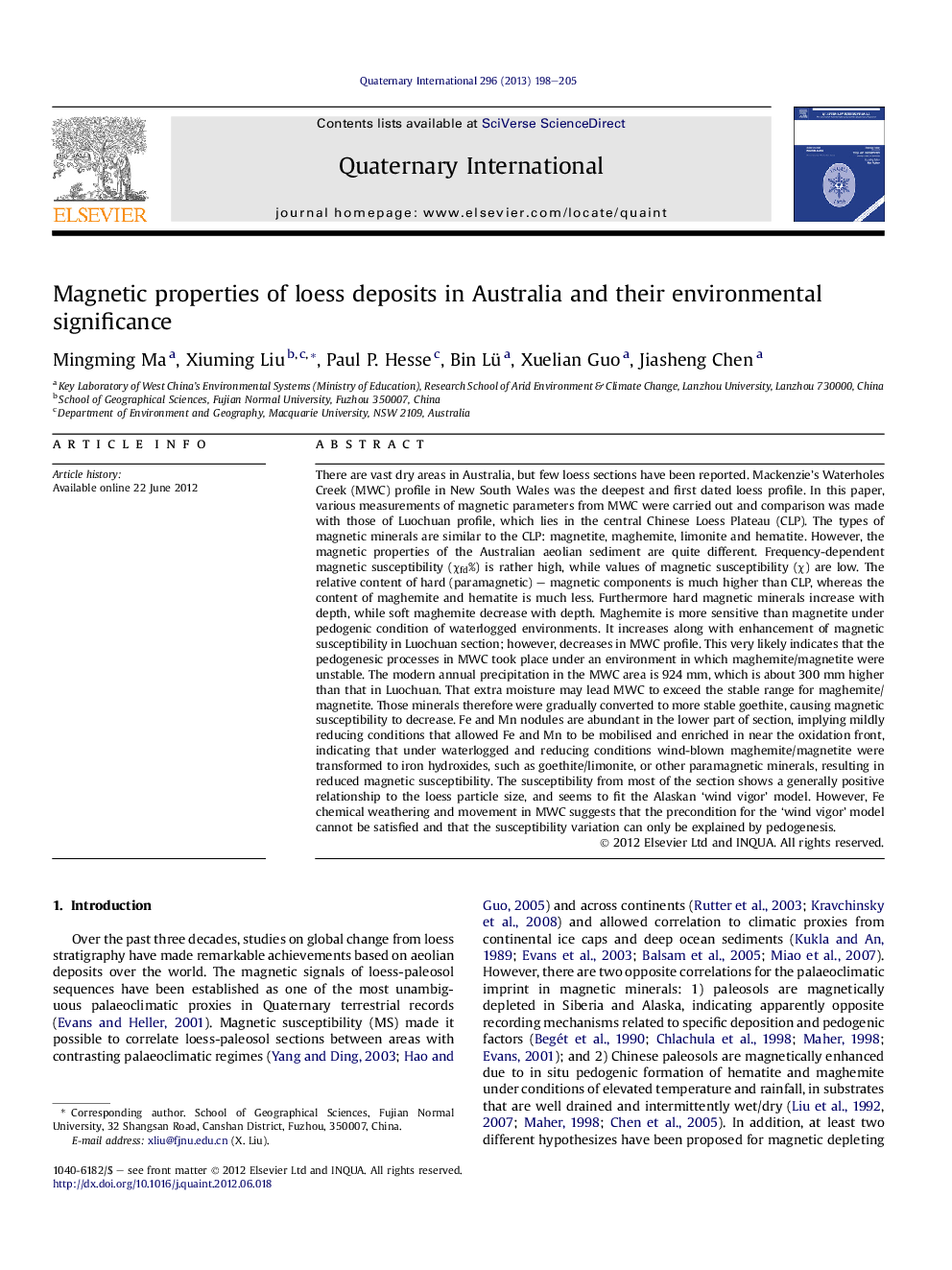| کد مقاله | کد نشریه | سال انتشار | مقاله انگلیسی | نسخه تمام متن |
|---|---|---|---|---|
| 1042224 | 1484193 | 2013 | 8 صفحه PDF | دانلود رایگان |

There are vast dry areas in Australia, but few loess sections have been reported. Mackenzie's Waterholes Creek (MWC) profile in New South Wales was the deepest and first dated loess profile. In this paper, various measurements of magnetic parameters from MWC were carried out and comparison was made with those of Luochuan profile, which lies in the central Chinese Loess Plateau (CLP). The types of magnetic minerals are similar to the CLP: magnetite, maghemite, limonite and hematite. However, the magnetic properties of the Australian aeolian sediment are quite different. Frequency-dependent magnetic susceptibility (χfd%) is rather high, while values of magnetic susceptibility (χ) are low. The relative content of hard (paramagnetic) – magnetic components is much higher than CLP, whereas the content of maghemite and hematite is much less. Furthermore hard magnetic minerals increase with depth, while soft maghemite decrease with depth. Maghemite is more sensitive than magnetite under pedogenic condition of waterlogged environments. It increases along with enhancement of magnetic susceptibility in Luochuan section; however, decreases in MWC profile. This very likely indicates that the pedogenesic processes in MWC took place under an environment in which maghemite/magnetite were unstable. The modern annual precipitation in the MWC area is 924 mm, which is about 300 mm higher than that in Luochuan. That extra moisture may lead MWC to exceed the stable range for maghemite/magnetite. Those minerals therefore were gradually converted to more stable goethite, causing magnetic susceptibility to decrease. Fe and Mn nodules are abundant in the lower part of section, implying mildly reducing conditions that allowed Fe and Mn to be mobilised and enriched in near the oxidation front, indicating that under waterlogged and reducing conditions wind-blown maghemite/magnetite were transformed to iron hydroxides, such as goethite/limonite, or other paramagnetic minerals, resulting in reduced magnetic susceptibility. The susceptibility from most of the section shows a generally positive relationship to the loess particle size, and seems to fit the Alaskan ‘wind vigor’ model. However, Fe chemical weathering and movement in MWC suggests that the precondition for the ‘wind vigor’ model cannot be satisfied and that the susceptibility variation can only be explained by pedogenesis.
Journal: Quaternary International - Volume 296, 16 May 2013, Pages 198–205